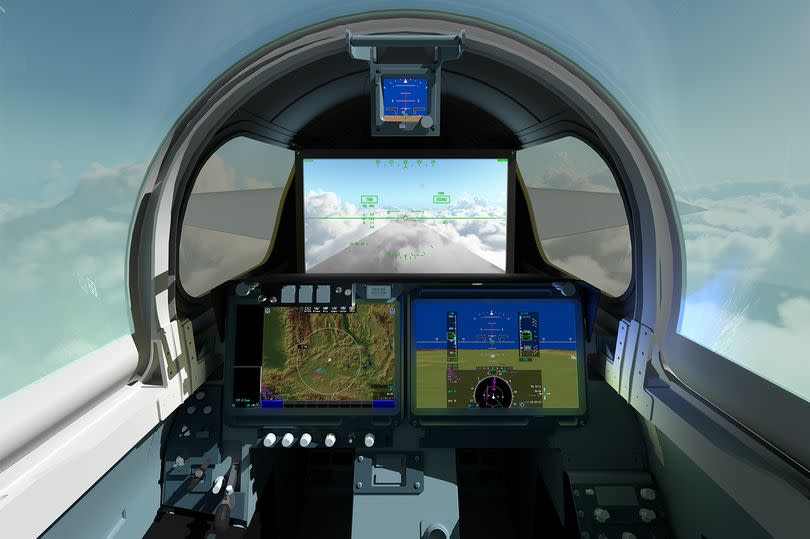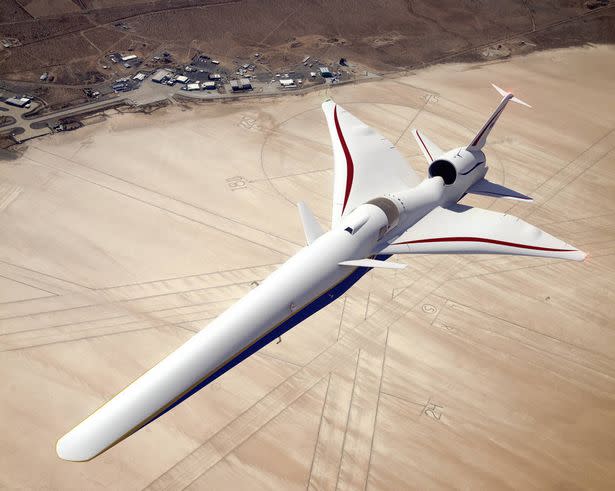NASA reveals new details of ‘Son of Concorde’ which could fly from London to New York in three hours

NASA has revealed more details about its hi-tech supersonic aircraft - known as ‘Son of Concorde’ - which could take flight in 2021.
Known as the X-59 Quiet Supersonic Transport (QueSST), the vehicle won’t have front windows - and pilots will instead look through cameras.
The planned jet, X-59, could fly from London to New York in just three hours.
Earlier this year, contractor Lockheed announced that it had begun manufacturing the first part for a demonstrator aircraft which will fly in 2021.
The removal of the front windows will help the craft to travel at supersonic speeds without creating a sonic boom.

NASA said in a statement, 'The 4K monitor, which is part of the aircraft’s eXternal Visibility System, or XVS, displays stitched images from two cameras outside the aircraft combined with terrain data from an advanced computing system.
'The two portals and traditional canopy are real windows however, and help the pilot see the horizon.
'The displays below the XVS will provide a variety of aircraft systems and trajectory data for the pilot to safely fly.
Read more from Yahoo News UK:
John Prescott in hospital after suffering stroke
Woman bailed after ‘trying to open plane door’ mid-air
Firefighters smash window to rescue baby trapped in hot car
'The XVS is one of several innovative solutions to help ensure the X-59’s design shape reduces a sonic boom to a gentle thump heard by people on the ground.
Earlier this year, Lockheed built the first part for the jet.
The company announced on Friday that it had begun manufacturing the first part for a demonstrator aircraft which will fly in 2021.
The low-boom flight demonstrator for X-59 will be used to gather data on people’s response to the quiet ‘boom’ - described as ‘quieter than a car door closing’.
NASA hopes that this will allow it to establish an ‘acceptable’ noise level - and overturn regulations banning supersonic travel over land.



